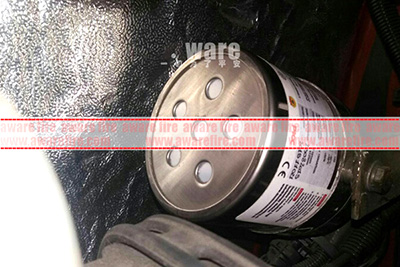Kategorier
- Vår blogg (69)
- Teknisk support (18)
Railway locomotives have hundreds of years of development history and many years of technical innovation, Idag pratar vi om brandskyddet av järnvägslokomotiv, Först och främst, Vi bör prata om kunskapen om järnvägslokomotiv.

The railway locomotive itself has no power device, whether it is a passenger locomotive or freight locomotive, we must connect many carriages to form a train, then it can move only after being pulled by a locomotive. Därför, the locomotive is the basic power of railway transportation.
There are many kinds of locomotives used on the railway, according to the original power of the locomotive, there are Steam locomotives, diesel locomotives, and electric locomotives.
The application of steam locomotives has a history of more than 170 år. It converts the heat energy of a fuel (coal, oil, trä) into mechanical energy through a steam engine,
It converts the heat energy of a fuel (coal, oil, trä) into mechanical energy through a steam engine, to make the train move. The steam locomotive is mainly composed of a boiler, steam turbine, frame, coal water vehicle, coupler, buffer device, and braking device.
The steam locomotive has characteristics of low thermal efficiency, large energy consumption, and small transmission capacity, so it has been phased out in the world at present.
A diesel locomotive is a locomotive powered by a diesel engine, its characteristics are high thermal efficiency, long continuous working time, suitable for long-distance operation.
The diesel locomotives currently used can be divided into electric drive and hydraulic drive styles.
The electric locomotive itself does not carry electric energy, it depends on obtaining electric energy from the catenary wire along the way, it is driven by a traction motor.
The power plant sends 110 till 220 kv three-phase power frequency AC power through the transmission line to the railway traction substation, which supplies 25 till 27.5 kv single-phase power frequency AC power to the catenary for electric locomotives.
An electric locomotive is mainly composed of the vehicle body, running gear, under-frame, coupler and buffer device, braking device, and a complete set of electrical equipment.
The electric locomotive has the advantages of large power, fast starting speed, good at climbing, easy to implement high-speed and heavy-load.
För närvarande, due to the extensive development of electric power and the continuous development of new energy power, the electric locomotive has become the most widely used.
The high-speed rail, tunnelbana, and light rail we use are all driven by electric locomotives.
dock, no matter what type of locomotive, including electric locomotive, they will produce a lot of heat when they are operating.
There are many pipelines on the locomotive and the space is very limited, it is easy to cause thermal runaway under the condition of long time moving, aging of the line, and high temperature of the weather.
The loss of a locomotive caused by fire after a thermal runaway is huge, and the economic loss is thousands of dollars. Därför, we need to consider the issue of locomotive fire prevention, and it is necessary to select a suitable locomotive fire protection system.
As we mentioned earlier, there are many locomotive pipes and networks on the expensive railway locomotive and its space is very limited, So the fire suppression system installed shall have the following characteristics:
För närvarande, large-scale gas, skum, and water-mist fire extinguishing systems are not suitable for railway locomotives. the remaining two products are most likely to be the choice of locomotive fire protection, är: aerosol fire protection eller fire trace tube suppression system.
Hereby let us compare these two systems: the Aerosol System and the Fire Trace System.
The Aerosol system has the following main advantages:
Fire trace system has the following main advantages:
Därför, considering the above features from the perspective of safety and convenience aerosol fire extinguishing systems will be more suitable for railway locomotives.
Many people worry that they don’t know how to install aerosol systems on railway locomotives it is very simple to install on the railway locomotive. I allmänhet, the aerosol device has its mounting bracket, clamp, and screw, just drill a few holes at the proper position on the locomotive (usually the position prone to fire), and then fix it with the mounting brackets.
There is also a more convenient way to install, that is, to install by magnet adsorption, and directly attach the fire extinguishing device to the iron plate of the locomotive engine.
On the wiring, connect the fire extinguishing device with a soft wire to the battery on the locomotive, and then install a start button and an alarm device in the lab, It is that simple!
Our dealers around the world have many installation cases, in the following we list some of them:
Choosing an aerosol fire suppression system as a railway locomotive fire protection solution is feasible.